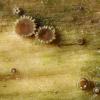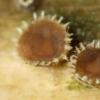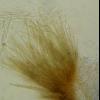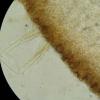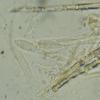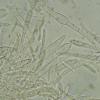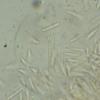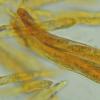
11-01-2026 20:35
Hello.A very tiny pyrenomycete sprouting sparsely

09-01-2026 17:41
Arnold BüschlenHallo, F. dilatata wird von vielen Bryoparasiten

10-01-2026 20:00
Tom SchrierHi all,We found picnidia on Protoparmeliopsis mur

07-01-2026 22:22
 Danny Newman
Danny Newman
Tatraea sp. on indet. hardwood The Swag, Great Sm

10-01-2026 01:18
 Danny Newman
Danny Newman
cf. Neovaginatispora fuckelii on indet. shrub Pre

07-01-2026 10:24
 Danny Newman
Danny Newman
Pezicula sp. on indet. hardwood Appalachian Highl

09-01-2026 10:08
 Blasco Rafael
Blasco Rafael
Hola, en el mismo habitat que la anteriorRetamaDia

08-01-2026 21:22
 Blasco Rafael
Blasco Rafael
Hola, He recogido esta muestra de Orbilia sobre Re

07-01-2026 17:29
 Marc Detollenaere
Marc Detollenaere
Dear Forum,On a barkless Populus I found some smal

10-11-2021 17:33
 Riet van Oosten
Riet van Oosten
Add-on topic http://www.ascofrance.com/forum/7059
It would be great to hear your opinion on this:
Substrate: Decorticated, deciduous wood
Fruitbodies: Up to 1 mm in diameter. Disc brown to slightly rose in age. Hairs in tufts, whitish (see photos).
Micro: Asci 60-75 x 7-9 µm, without crosiers, IKI- also after KOH pretreatment. Spores 14-22 x 2.8-3.5 µm, aseptate. Hairs up to 200 x 5 µm, hyaline to yellowish, thick walled, with resinous, brownish excretions. Paraphyses broadly lanceolate, up to 7 µm enlarged, often very fine granules on the apical cell.
Thank you for any help
Stefan
Hi Stefan
It looks like Trichopeziza 'perrotioides' un undescribed species of the genus Trichopeziza
Thanks a lot for your answer. Such a nice species and still undescribed. What a pity...
Best
Stefan

I hesitated here to answer because I struggled with the spores. Those of T. perrotioides are less tapered at the ends and often slightly allantoid, dn they were never such long: *(8-)10-16(-17.5) x 2.7-3.4(-3.7) ?m. I saw a high number of records or images, and the species shows a certain variability, including colour.
Typical besides inamyloid asci without croziers are the warted deposits on the paraphyses. These are visible on your photos, though rather inconspicuous. I am not sure what else could be tested in your fungus. Yes, it is strange that so far no name could be found for it in the literature, though it is full of unclarified names.
I would like to note the collection data of this record, if you don't mind. At present, I would not include it in the species but only mention in my prospected paper.
For the host you have no idea? Possibly the wood anatomy could help?
Zotto
Danke für die Antwort. Die Sporenlänge war im grossen und ganzen bis 18 mü, mit Ausnahmemessungen von 19 und 22 mü. Die Sporen stammten aber auch von einem etwas überreifen FK.
Funddaten: 8.2.2014, Kanton Bern, Trubschachen, 822 m.ü.m., Koordinaten: 630825 / 196515
Substrat: Höchstwahrscheinlich Fraxinus
Liebe Grüsse
Stefan

Danke!
Fraxinus lässt sich zweifelsfrei erkennen an einem Querschnitt oder -bruch: Auffällig ringporig und Spätholzgefäße in kleine Gruppen oder gar einzeln.
Herbarnummer wäre auch noch gut, schlimmstenfalls muss man den Fund irgendwann mal nachmikroskopieren, falls die Zweifel bleiben...
Zotto
Herbarnummer: SB2014010
Gruss
Stefan
